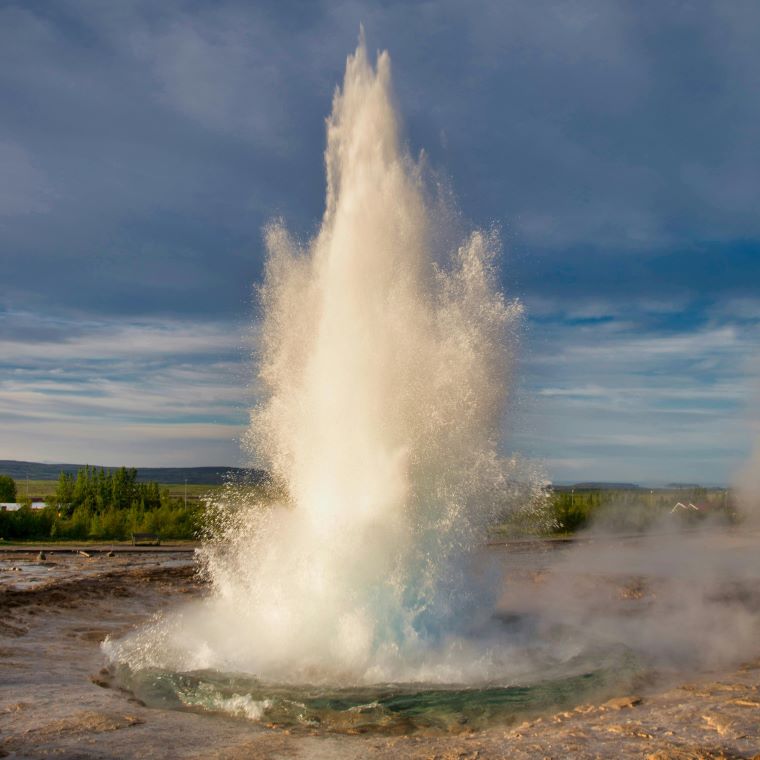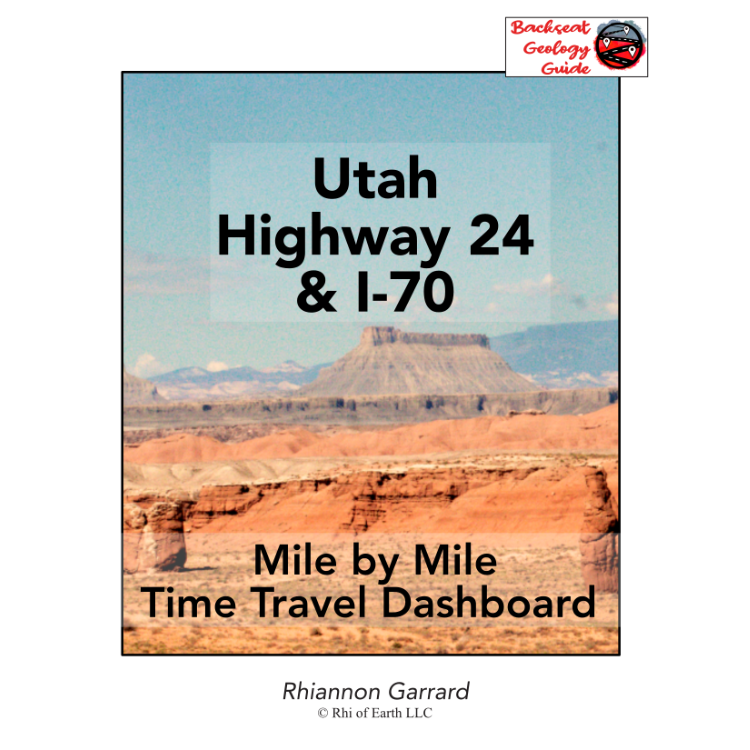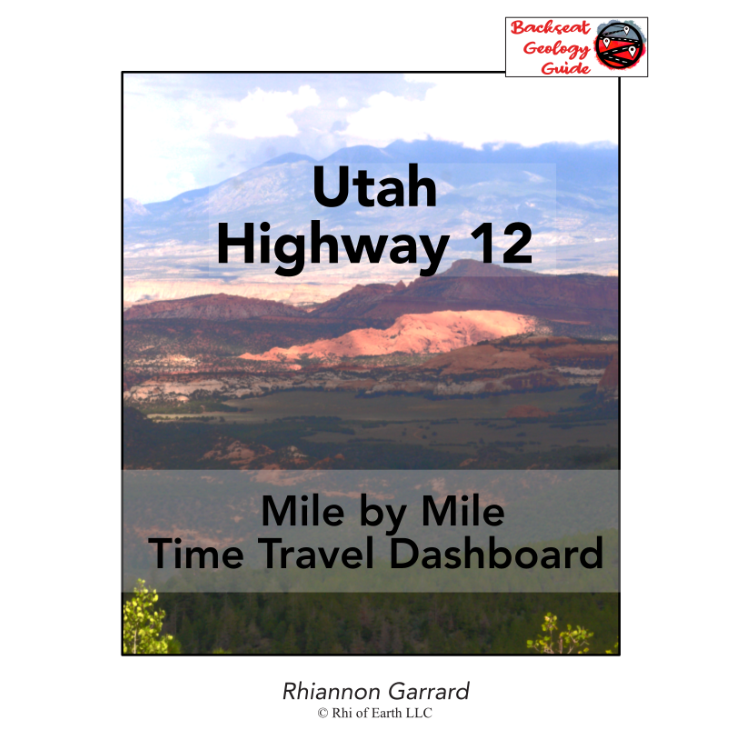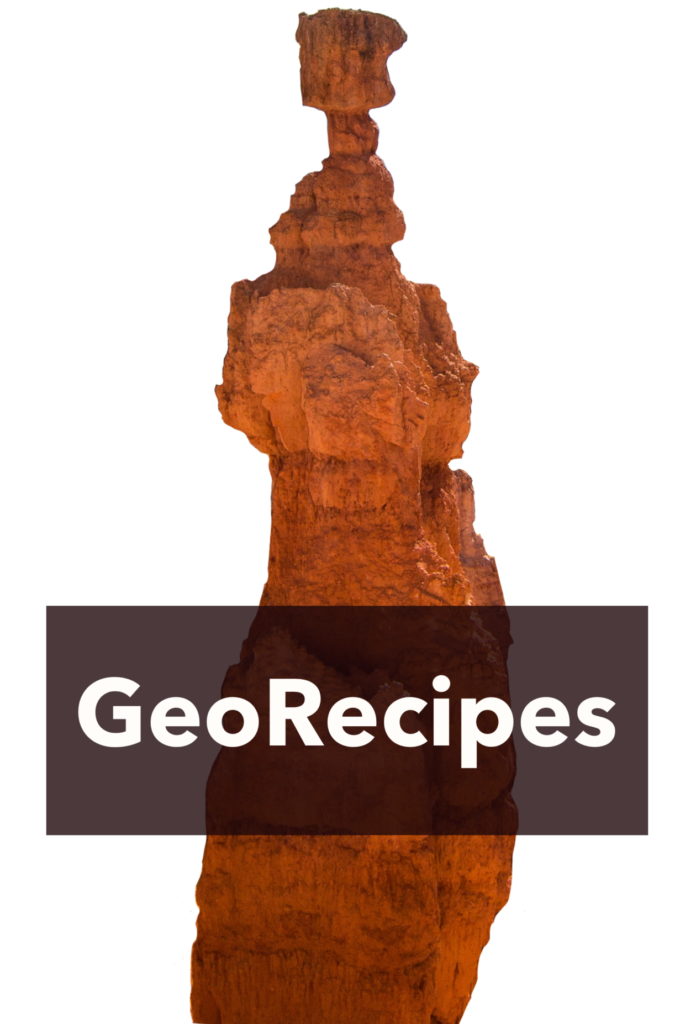
It was once thought that draas or mega sand dunes took millennia to form. Each grain of sand carried by the wind growing the dune centimeter by centimeter. However, recent research has shown that not to be the case. With a strong steady wind and a large source of sand draas can form in only thousands of years, maybe less. Regardless of how long they take to form visiting one of these landforms will give you bragging rights.
.
11. The Dragon Hill, Dunes of Concon, Chile
The Dragon Hill Dunes of Concón in Chile, reaching up to 85 meters (279 feet) in height, are a striking geological wonder. These coastal dunes, named for their serpentine shape that resembles a dragon’s back, are a playground for sandboarding enthusiasts and curious travelers alike. Their unique formations are continually sculpted by the relentless coastal winds, creating an ever-changing landscape.
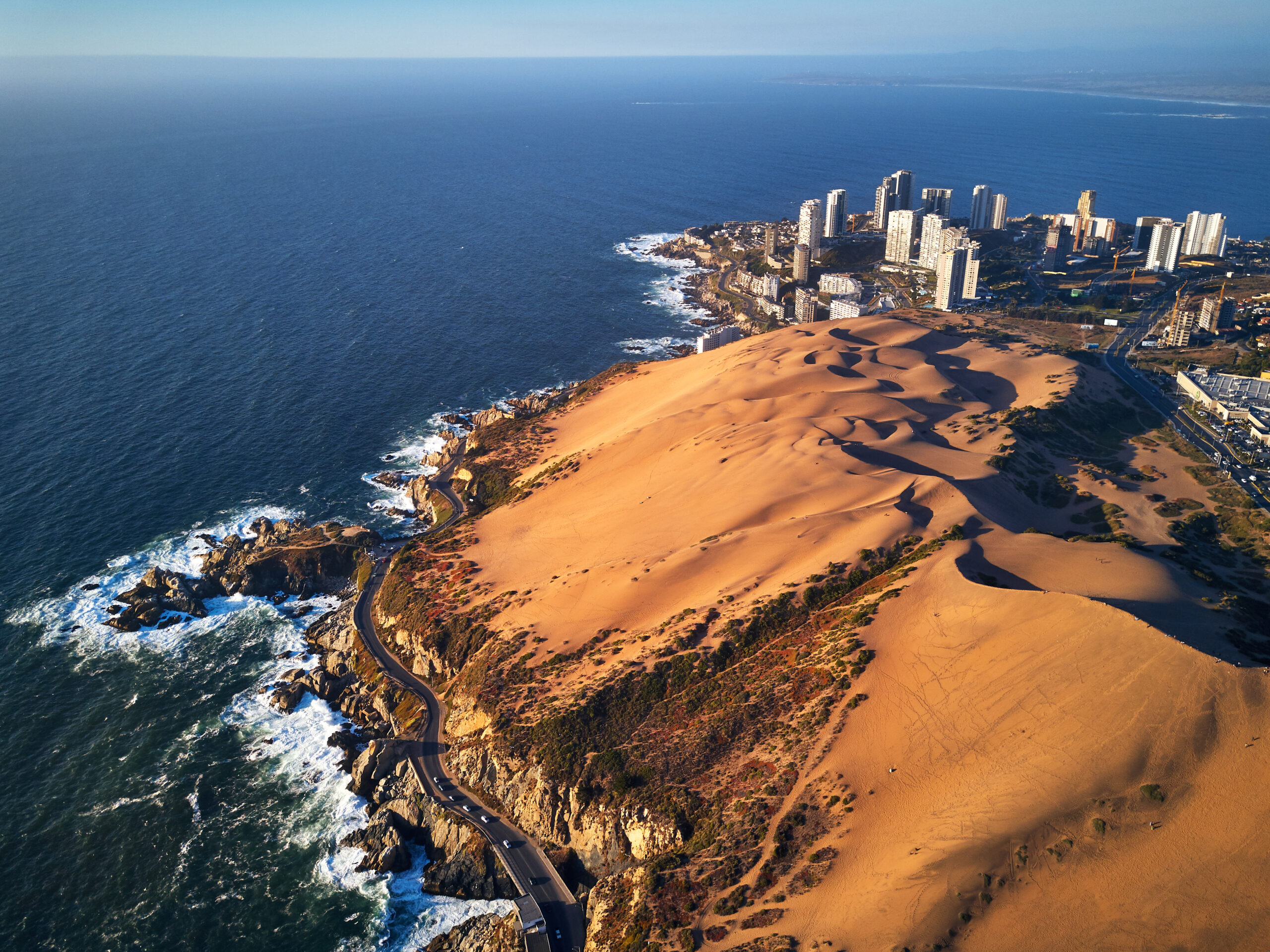
Easily accessible from the city of Viña del Mar, the dunes offer panoramic views of the Pacific Ocean and the bustling town below. Whether you’re in it for the adrenaline rush or the breathtaking vistas, the Dragon Hill Dunes are a must-visit spot in Chile.
10. Great Dune of Pyla, France
The Great dune of Pyla, locally known as the Dune du Pilat is located in southwestern France, near Arcachon Bay. It is the tallest sand dune in Europe, rising approximately 110 meters (360 feet) above sea level and stretching nearly 2.7 kilometers (1.7 miles) long. The dune offers stunning panoramic views of the Atlantic Ocean on one side and the expansive pine forests of the Landes region on the other. It is a popular spot for paragliding due to its height and scenic location.

Dune du Pilat is easily accessible by car from Bordeaux, about an hour’s drive away. There is a parking area at the base of the dune, and visitors can climb to the top via a designated staircase or directly on the sand.
9. Erg Chebbi, Morocco
Erg Chebbi, is located in the Merzouga desert section of the Sahara. It features some of the tallest sand dunes in Morocco, with heights reaching up to 150 meters (490 feet). Erg Chebbi is famous for its stunning, ever-changing colors at sunrise and sunset, drawing photographers and travelers from around the world. It is also known for its traditional Berber culture and hospitality.

Erg Chebbi is accessible from the town of Merzouga, which is about a 10-hour drive from Marrakech or Fes. Visitors often take guided camel treks or four-wheel-drive tours to explore the dunes and experience the desert landscape.
8. Star Dune, Great Sand Dunes National Park, Colorado, USA
Star Dune is the most prominent dune within Great Sand Dunes National Park and Preserve in southern Colorado. Standing approximately 290 meters (750 feet) tall, makes it the tallest dune in North America. Star Dune is named for its star shape, formed by multidirectional winds that cause sand to accumulate in a central peak with radiating arms. Climbing Star Dune is a popular challenge for visitors due to its height and the spectacular views it offers of the surrounding dune field and the Sangre de Cristo Mountains. The hike to the summit is strenuous, taking several hours to complete, but rewards climbers with a unique perspective on the vast and dynamic landscape.

Great Sand Dunes National Park is accessible by car via U.S. Highway 160 and Colorado State Highway 150. The main entrance to the park is near the town of Alamosa. From the Dunes Parking Area, visitors can set out on foot to reach Star Dune, although there is no marked trail. Hikers are advised to bring plenty of water, sunscreen, and to be prepared for the challenging terrain.
7. Mount Tempest, Moreton Island, Queensland, Australia
Mount Tempest, located on Moreton Island in Queensland, Australia, is one of the highest coastal sand dunes in the world, rising approximately 285 meters (935 feet) above sea level. This towering dune offers a striking contrast to the island’s surrounding beaches and clear blue waters. The summit of Mount Tempest provides a 360-degree panoramic view, encompassing the entire island, the Coral Sea, and the distant Brisbane skyline. It is a popular spot for sunrise and sunset views, offering a unique vantage point to witness the beauty of Moreton Island.
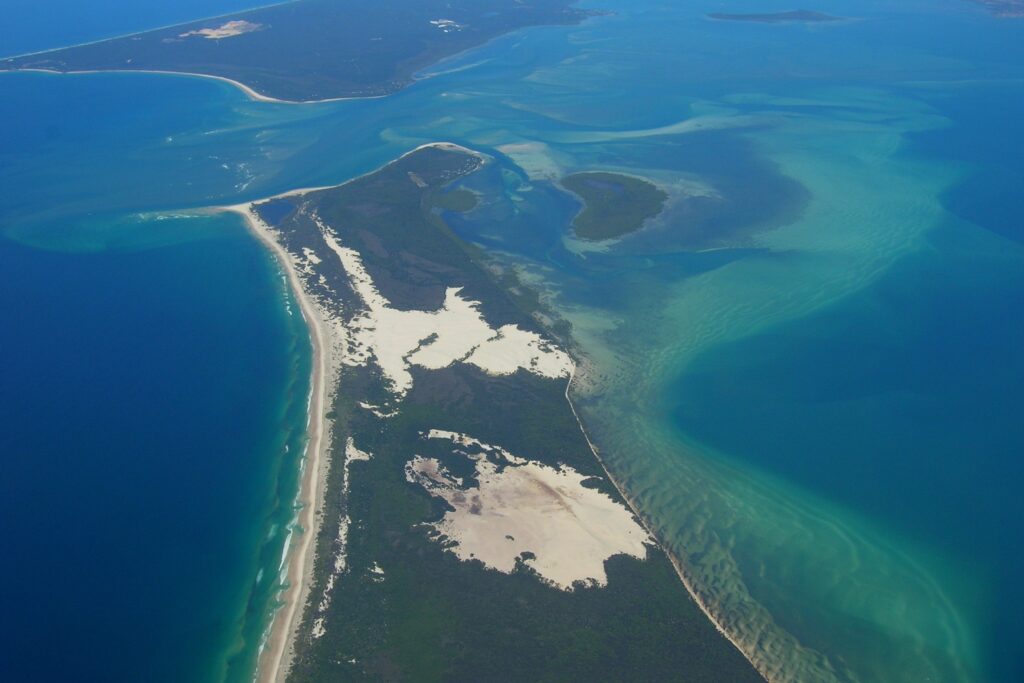
Moreton Island is accessible via a ferry ride from Brisbane, which takes about 75 minutes. Once on the island, Mount Tempest can be reached by 4WD vehicles, as the island’s terrain is sandy and requires off-road capabilities. A hiking trail leads from the base to the summit of Mount Tempest, taking about 1 to 1.5 hours to climb. The trail is well-marked but can be steep and challenging due to the soft sand. Visitors should bring sufficient water, sun protection, and sturdy footwear for the hike.
6. Ramlat Jadilah, Rub’ Al Khali, Oman
Ramlat Jadilah is a section of the Rub’ al Khali, also known as the Empty Quarter, which extends into Oman. This vast desert features some of the highest and most striking sand dunes in the Arabian Peninsula, with dunes often reaching heights of over 300 meters (985 feet).
The Empty Quarter is renowned for its extreme conditions and stark beauty. The desert has a rich cultural history, featuring in many Arabic tales and legends.

Ramlat Jadilah is remote and requires careful planning to access. The nearest major city is Salalah, located in the Dhofar region of Oman. From Salalah, the journey involves traveling by 4×4 vehicle, as the terrain is challenging and sandy. It is essential for travelers to be well-prepared with sufficient supplies of water, food, fuel, and navigation equipment due to the harsh desert environment. Guided tours with experienced local guides are highly recommended to ensure safety and to provide a deeper understanding of the region’s unique features and history.
5. Dune 7, Namib Sand Sea, Namibia
The Namib Sand Sea, part of the Namib Desert, features some of the highest and oldest sand dunes in the world, with some reaching over 300 meters (1,000 feet). This UNESCO World Heritage site is characterized by its dramatic red and orange sand dunes. Sossusvlei is a salt and clay pan surrounded by towering red sand dunes, located in the southern part of the Namib Desert within Namib-Naukluft National Park, Namibia. The dunes around Sossusvlei are some of the highest in the world, with some reaching heights of over 300 meters (984 feet). Dune 7 is a prominent sand dune located in the Namib Desert near the coastal town of Walvis Bay, Namibia. Standing at approximately 388 meters (1,273 feet), it is the tallest dune in the Namib Desert and one of the highest in the world. It is named “Dune 7” because it is the seventh dune beyond the Tsauchab River, a naming convention used by early settlers. The dune is a favorite spot for activities like sandboarding, quad biking, and hiking.

The Namib Sand Sea is accessible via the town of Sesriem, which serves as the gateway to Sossusvlei. Visitors can drive most of the way to Sossusvlei using a standard vehicle, but the last few kilometers are best navigated with a 4×4 vehicle due to the deep sand. For those without a 4×4, shuttle services are available from the 2×4 parking area. The park entrance is open from sunrise to sunset, and visitors can also explore the dunes and pans on foot. Accommodations ranging from campsites to lodges are available in Sesriem and nearby areas. Dune 7 is easily accessible by car from Walvis Bay, which is just a short drive away. The dune is located off the main road connecting Walvis Bay to Swakopmund, another popular tourist destination. There is a designated parking area at the base of the dune, making it convenient for visitors to start their ascent. Visitors are advised to bring water, sunscreen, and wear appropriate footwear for climbing sand dunes.
4. Rig-e-Yalan, Lut Desert, Iran
Rig-e-Yalan is the third highest dune in the world at about 500 meters (1640 feet) tall. The Lut Desert, where Rig-e Yalan is located, is recognized as one of the hottest places on Earth, with surface temperatures recorded by satellites reaching up to 70.7°C (159.3°F).

Rig-e Yalan is remote and challenging to access, typically requiring a well-planned expedition. The nearest major city is Kerman, which is about 400 kilometers (250 miles) away. From Kerman, travelers usually drive to smaller towns like Shahdad before venturing into the desert. Due to the harsh and extreme conditions, a 4×4 vehicle is essential for navigating the dunes and desert terrain. It is crucial to carry sufficient supplies of water, food, fuel, and navigation equipment. Visitors often join guided tours or expeditions with experienced local guides who are familiar with the desert’s challenges and logistics.
3. Badain Jaran Desert, Inner Mongolia, China
The Badain Jaran Desert, located in the Gobi desert of Inner Mongolia, China, is known for its consistently massive sand dunes, some of which are the tallest in the world, reaching heights of over 500 meters (1640 feet). The desert is unique for its numerous freshwater and saltwater lakes that lie between the dunes, creating a striking contrast between the arid landscape and the shimmering water bodies.
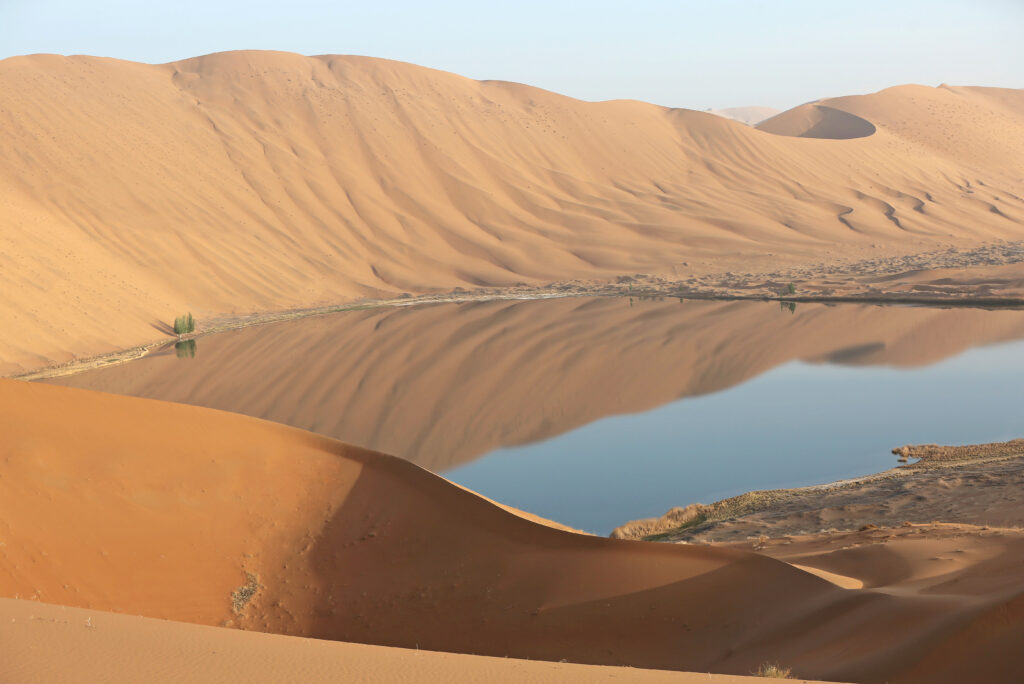
Access to the Badain Jaran Desert is typically through the city of Jinchang in Gansu Province or the town of Alxa Right Banner in Inner Mongolia. Visitors often join guided tours or hire local drivers to navigate the challenging terrain.
2. Cerro Blanco, Peru
Cerro Blanco, located near the town of Nazca in southern Peru, is the second tallest known sand dune in the world, standing at an impressive height of approximately 2,080 meters (6,824 feet) above sea level. The dune itself rises about 1,176 meters (3,858 feet) from its base. Cerro Blanco offers breathtaking views from its summit, overlooking the surrounding desert landscape and the distant Andes Mountains. It is not only a natural wonder but also a cultural site, with the nearby Nazca Lines adding historical significance to the area.

Accessing Cerro Blanco requires a hike that typically starts from the town of Nazca. The trek to the summit takes about 3 to 4 hours and can be challenging due to the steep incline and loose sand. Travelers should be prepared with adequate water, sun protection, and suitable footwear. Guided tours are available and recommended for those unfamiliar with the terrain. The starting point for the hike can be reached by a short drive from Nazca, which itself is accessible by bus or car from Lima or other major cities in Peru.
1. Dunas Federico Kirbus, Dunes of Taton, Argentina
The Dunas Federico Kirbus in Argentina, soaring to a staggering 1,230 meters (4,035 feet), hold the title of the highest sand dune in the world. Nestled in the Fiambalá region of Catamarca, this colossal dune is a magnet for thrill-seekers and adventurers. Named after the Argentine journalist Federico Kirbus, it offers exhilarating sandboarding and off-road driving experiences. Nearby, the Dunas de Tatón, while slightly shorter, also provide a stunning playground for outdoor enthusiasts.
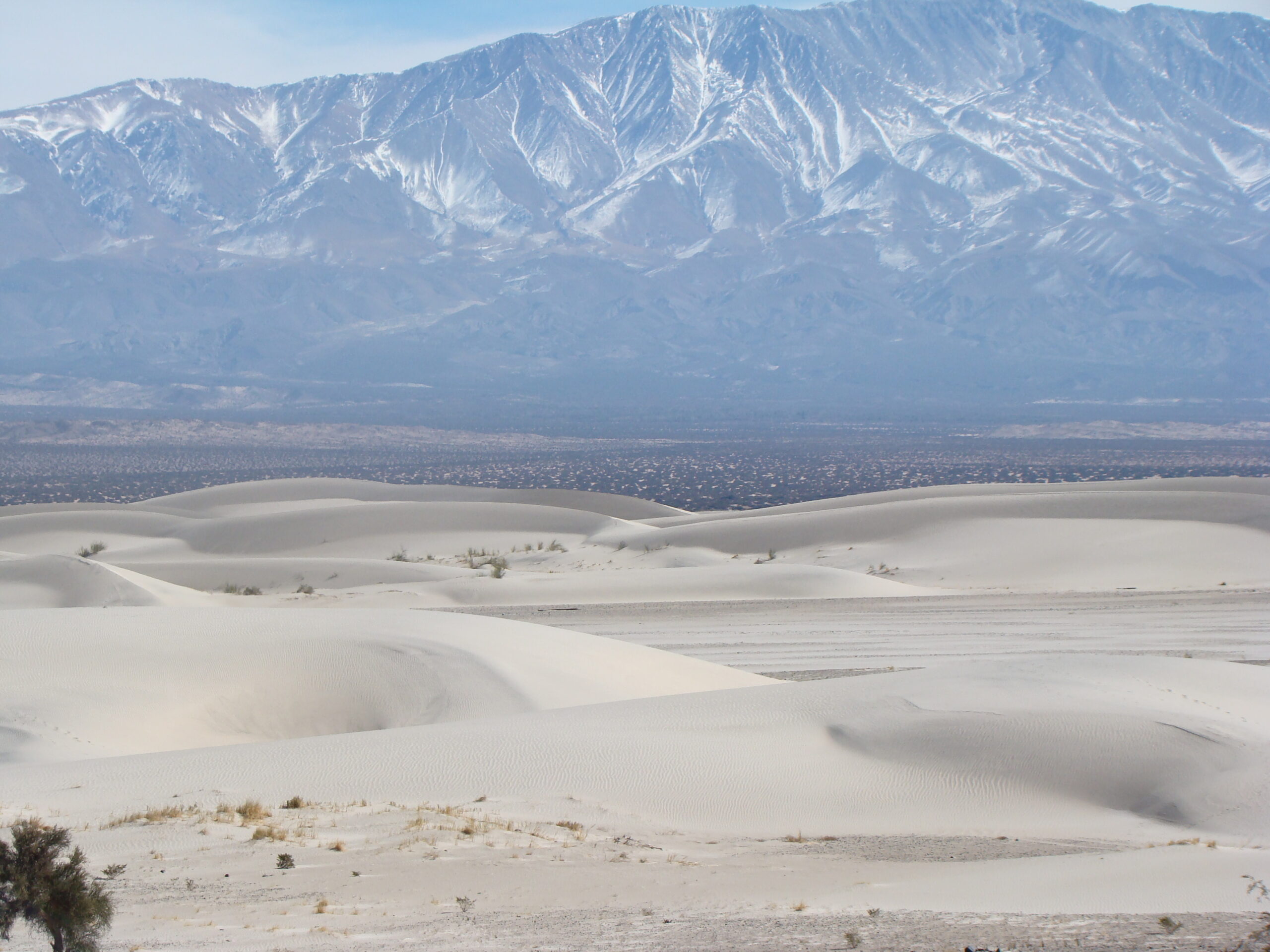
Pictures of the Federico Kirbus are hard to come by due to the dune’s remote Andean location. However, both dunes are accessible via a scenic drive. start from Fiambalá in Catamarca province, Argentina. From major cities like San Fernando del Valle de Catamarca (320 km/199 miles) or La Rioja (280 km/174 miles), drive along Ruta Nacional 60. Once in Fiambalá, head towards the village of Tatón, about 50 kilometers (31 miles) away, passing through scenic landscapes. Local tour operators also offer guided excursions with transportation, sandboarding equipment, and expert guides. This journey through the Andean foothills is as thrilling and beautiful as the dunes themselves.



